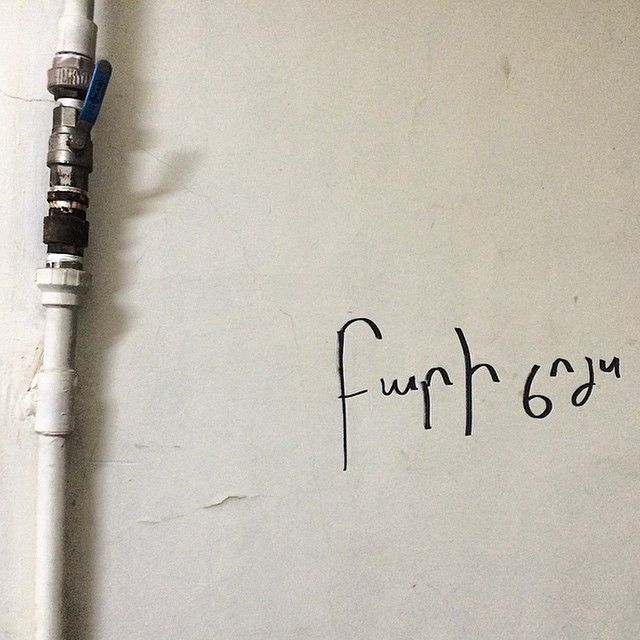It’s almost as if our compatriots in Bolis are working mightily to restore their home city to its status of a century-plus ago when, along with Tiflis (Tbilisi), Georgia, the two cities served as Armenia’s “capitals”—and from the point of activism, education, intellectual ferment, reform, religion, revolution… they really were!

Unfortunately, in the political-governmental sphere, the Armenian Highland was bereft of an “on-site” focus considering the (then) five-centuries-plus nonexistence of Armenian statehood. Never forget, Bolis is more of an Armenian city than Turkish. One-third of Byzantine emperors were Armenians. After the Turks captured the city, we were still among the main artisans, builders, financiers, and merchants that made the city great.
You might wonder how I could possibly even think such a thing with so few Armenians left in Bolis, along with the Turkish-occupied portion of the Armenian Highlands, Cilicia, and Asia Minor. But that may be exactly why there’s so much happening there—the repression and “oblivion” forced upon Armenians through successive Turkish regimes’ policy. There may be an unspoken, understated, “we’re not gonna take it any more” attitude permeating our persecuted compatriots.
Here are the examples, both specific and general, very recent and somewhat less so, that have led to this thought and the article attempting to elucidate it.
On Oct. 27, Robert Haddejian completed 50 years of service as the editor of Marmara (named after the sea separating “European” from “Asiatic” Turkey, of course), which has been published in Bolis since Aug. 31, 1940. The very next day, Jamanak (“Time”), the longest continuously running Armenian language daily newspaper (a distinction held by Boston’s Hairenik until it went weekly several years ago), published in the same city, celebrated its 110th anniversary.
The 36th Annual International Istanbul Book Fair, held in early November, featured numerous books about Armenians, the Armenian Genocide, and Armenian issues.
There’s the ongoing saga, perhaps better referred to as a farce, of the Patriarchal elections, which have been stalled for months (years?) on end because of the Turkish authorities’ shenanigans, enabled through the power-hunger of certain individuals within our community. Then there is Garo Paylan’s involvement in bringing attention to prominent businessman and civil society activist Osman Kavala’s unjust detention by the Turkish authorities.
Of course, all this brings us to one of the medium term examples of Bolis’s intensity—having produced three Armenian members of parliament, in Turkey, in the June 2015 Turkish election. Also on the political front, Elmas Kirakos and Taylan Yıldız are founding members of a new Turkish political party, Iyi Parti (Good Party), led by Meral Akşener. Akşener is touted as a serious challenger to Erdoğan in the next Turkish presidential elections. But, most recently, she was in the Milliyetçi Hareket Partisi (Nationalist Movement Party), a chauvinist party usually associated with the Gray Wolves, a paramilitary youth group that has conducted many attacks. This seems like a strange place for Armenians to be. But then, Selina Doğan, one of the three Armenian members of Turkey’s Büyük Millet Meclisi (parliament) is in the CHP, the party of Ataturk, and Markar Esayan is in the AKP, Erdoğan’s party. Politics does indeed make for strange bedfellows.
Add to the above medium-term trends embodied in open commemorations of the Armenian Genocide, Crypto-Armenians’ coming out of hiding, Kurdish recognition of the genocide and active embrace of Armenians, the progressive (primarily Kurdish) HDP and its positions on matters Armenian, the difficulty that Islamized Armenians face when trying to re-adopt Christianity… All these ultimately lead back to Bolis.
In these, more trying times of Erdoğan’s ascendancy, let’s not forget our compatriots who are holding down the fort for us in old Bolis (Byzantium/Constantinople/Istanbul). If you have remote or close relatives there, keep up, strengthen, or re-establish your connections. Let’s make sure they do not feel alone. Let’s make sure they are well integrated with and attuned to the web of Armenian life that spans the globe.


Hey Garen, how many Turkish districts/sections are allowed in Armenia? Indeed, how many, (if any), are there? How many Turks or Azeris reside in Armenia?
Gotcha,
Remember, Armenians never invaded Central Asia’s territories to wipe Oghuz Turks! Western Turkey is part of Anatolia and will be part of Armenian Highlands for ever!
Hey Gotcha,
How many Armenian districts/sections are there in Baku or Sumgait? The only reason why there are no Turks/Azeris in Armenia is because what was done in Baku and Sumgait.